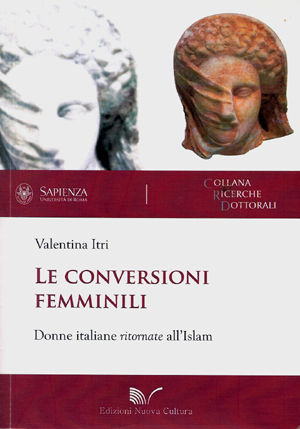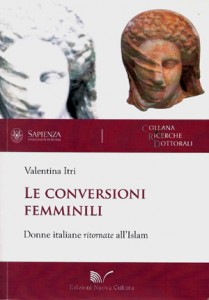How do women in Italy choose to convert Islam? How many are there, and what is the reason for their choice? We asked to Valentina Itri, author of the book “Le conversioni femminili, Donne italiane ritornate all’Islam” [Female Conversions, Italian Women and the return to Islam]
Images like those of Elham Asghari, the Iranian athlete forced to swim with wetsuit in order to not to reveal the shape of her body. This is the frequent image of Islam as an oppresive and closed religion especially for women. It may seem a paradox then, that there are many women in in Europe, who choose to convert to Islam, and without regret. A recent study by the University of Cambridge, for example, have shown that, although women who convert in the UK often have problems with their family of origin, difficulties at work and in relationships, very few question the choice they made. As for us, understanding the Italian situation is not easy. One of the few books on the subject is “Female Conversions, Italian Women and the return to Islam” written by Valentina Itri, a Professor in Social Theory and research, and an expert in immigrants and refugees. We asked the author to tell us something about the women who choose to “return to Islam” in our country.
Dr. Itri, how many converted to Islam in our country?
Official numbers do not exist, because there is no central register, and each community cites different figures. The fact is that to convert, or as they prefer to say, making the choice to “return to Islam” only invloves the convert to go to a mosque with two witnesses and recite the shahada, a sentence in which converts testify that they believe in a single God, whose messenger is Muhammad. Given the simplicity of the rite, it is difficult even for the Italian Islamic organizations to keep track of the number of conversions.
How does one make the choice of conversion?
Many of these women come into contact with Islam by marrying a Muslim. It is unlikely, however, that this is instrumental in conversions, because in Islam, Muslim men are allowed to marry women of other faiths. If anything, the choice is likely “relational,” due to the desire to get closer to the culture of their partner. My research has shown that after the initial approach, women often deepen their knowledge of the culture and religion. The attraction to them is almost always a change of lifestyle. Many of them, for example, complain about not being able to keep up with the demands of Western society.
It is a conservative choice?
Not exactly. We can say that conversion speaks to a “new subjectivity,” which illustrates a complaint against the effects of modernity. Faced with the a society that women have to navigate which can be, at times, backward and sexist, these women decide to take a step back. In some ways it is as if to say: I withdraw from competition. That is why we often embrace the idea of extremely orthodox Islam, and incorporate wearing a veil.
What difficulties do these women encounter?
The first problems arise in the relationship with their own family. If their fathers show solidarity, their mothers and sisters do not understand their choice, which is often seen as a step backwards. In the case of women married to Muslims, the relationship with the women of her husband’s family is complicated by excessively orthodox positions of the “return,” these women often hold ideas about religion that are even more conservative than those of their husbands. These women often tend to lose the friendships they had before the conversion, not because the relationship may be cut, but because these women are creating new social networks, incompatible with previous ones. Finally sometimes problems arise within the Muslim community, because they represent a good connection with the Italian community, and as such they are seen as competitors by those in power, the imam for example, often annoyed by the fact that they are women.







